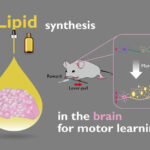2023-07-27 カロリンスカ研究所(KI)
 Photo: Thomas @Pixabay.
Photo: Thomas @Pixabay.
◆これにより、大気汚染が認知症リスクに与える影響についての生物学的メカニズムについて理解が深まりました。今後は、大気汚染が認知症を引き起こすメカニズムをさらに解明するための研究が進められる予定です。
<関連情報>
- https://news.ki.se/new-study-explains-how-air-pollution-increases-the-risk-of-dementia
- https://n.neurology.org/content/early/2023/07/13/WNL.0000000000207656
大気汚染への長期暴露と認知症リスクとの関連:ホモシステイン、メチオニン、心血管負担の役割 Association of Long-term Exposure to Air Pollution and Dementia Risk: The Role of Homocysteine, Methionine, and Cardiovascular Burden
Giulia Grande, Babak Hooshmand, Davide Liborio Vetrano, David Smith, Helga Refsum, Laura Fratiglioni, Petter Ljungman, Jing Wu, Andrea Bellavia, Kristina Eneroth, Tom Bellander, Debora Rizzuto
Neurology published July 13, 2023
DOI: https://doi.org/10.1212/WNL.0000000000207656
Abstract
Background and objectives: Growing evidence links air pollution with dementia risk, but the biological mechanisms are largely unknown. We investigated the role played by homocysteine (tHcy) and methionine in this association and explored whether this could be explained by cardiovascular diseases (CVDs).
Methods: Data were extracted from the ongoing Swedish National study on Aging and Care in Kungsholmen (SNAC-K), a longitudinal population-based study. At baseline, 2512 dementia-free participants were examined up to 2013 (mean follow-up: 5.18±2.96 years). Two air pollutants (particulate matter ≤2.5μm [PM2.5] and nitrogen oxides [NOX]) were assessed yearly from 1990 until 2013 using dispersion models at residential addresses. The hazard ratio of dementia over air pollution levels was estimated using Cox models adjusted for age, sex, education, smoking, socioeconomic status, physical activity, retirement age, creatinine, year of assessment and use of supplements. The total effect of air pollutants on dementia was decomposed into four pathways involving tHcy/methionine: 1. Direct effect; 2. Indirect effect (mediation); 3. Effect due to interaction; and 4. Effect due to both mediation and interaction. To test whether the association was independent from CVDs (ischemic heart disease, atrial fibrillation, heart failure and stroke), we repeated the analyses excluding those individuals who developed CVDs.
Results: Mean age of the study participants was 73.4 (SD:10.4) and 62.1% were females. During an average period of five years (mean:5.18; SD:2.96 years), 376 incident dementia cases were identified. There was a 70% increased hazard of dementia per unit increase of PM2.5 during the 5-years before baseline (HR:1.71;95%CI:1.33-2.09). Overall, 50% (51.6%;95%CI:9.0;94.1) of the total effect of PM2.5 on dementia was due to mediation of tHcy (6.6%;95%CI:1.6;11.6) and/or interaction (47.8%;95%CI:4.9;91.7) with tHcy and 48.4% (p=0.03) to the direct effect of PM2.5 on dementia. High levels of methionine reduced the dementia hazard linked to PM2.5 by 31% (HR:0.69;95%CI:0.56;0.85) with 24.8% attributable to the interaction with methionine and 25.9% (p=0.001) to the direct effect of PM2.5. No mediation effect was found through methionine. Attenuated results were obtained for NOx. Findings for tHcy were attenuated after excluding those who developed CVDs, while remained similar for methionine.
Discussion: High levels of homocysteine enhanced the dementia risk attributed to air pollution, while high methionine concentrations reduced this risk. The impact of homocysteine on cardiovascular conditions partly explains this association. Alternative pathways other than cardiovascular mechanisms may be at play between methionine and dementia.


